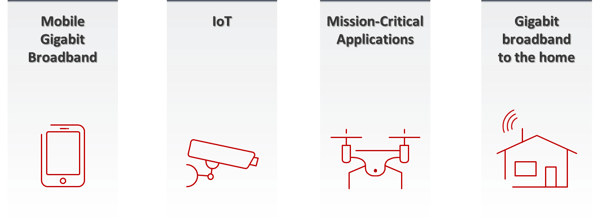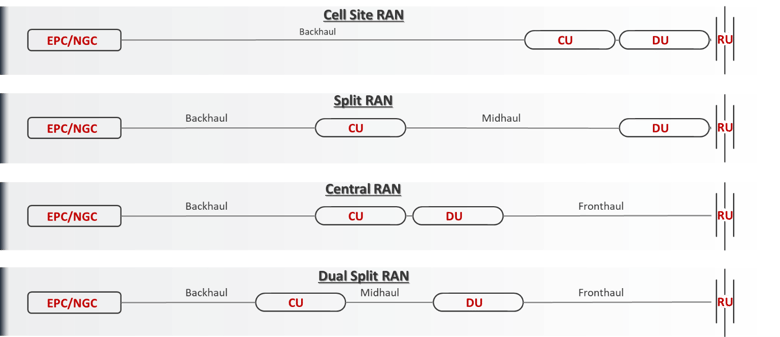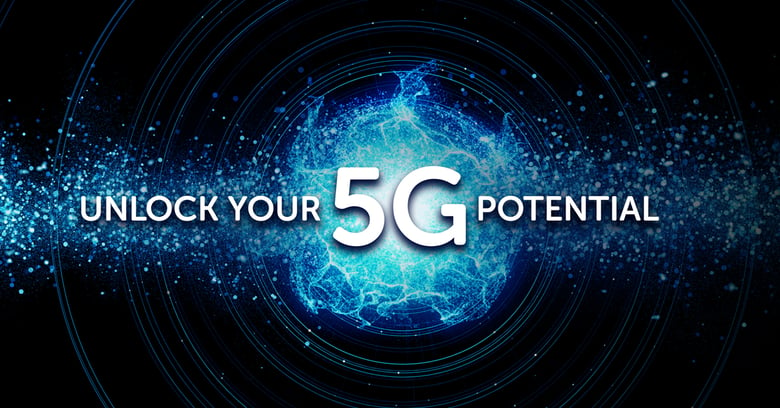5G is here!
Yes, 2019 was recently described by GSMA Intelligence as “year zero” for commercial 5G deployment.
True, 5G is not everywhere, and not to the full extent of its potential. But still, 5G is here.
As we settle into 2020, this is a great time to take a closer look at 5G challenges that are faced by operators seeking to unlock their 5G potential.
These challenges hide within “dimensions” that are different than the ones we looked at in previous generations of mobile technology.
As we gear up for massive 5G commercial deployment, there are three main “challenge dimensions” we should explore:
- Target markets dimension – multiple 5G use cases and services
- Architecture complexity dimension – multiple 5G network scenarios
- Spectrum complexity dimension – multiple 5G RAN frequency bands
The first dimension of target markets is driven by new use cases and new services enabled by 5G to address new target markets and create new revenue streams. These are, basically, the essence of 5G business potential.
As discussed before, there are two use cases that stretch existing 4G services to the limit: mobile gigabit broadband, via the enhanced mobile broadband (eMBB) use case; and gigabit broadband to the home, via the fixed wireless access (FWA) use case.
Additionally, there are two use cases which address new markets with new services: IoT, via the massive machine-type communications (mMTC) use case; and mission-critical applications, via the ultra-reliable low-latency communications (URLLC) use case.

Those services pose several challenges to your network.
The first challenge derives from the fact that those services need to co-exist over the same network while each service has extremely different requirements from that network. This calls for service orchestration that is done with network slicing and software-defined networking (SDN).
On top of that, some of the services require much more capacity (specifically eMBB and FWA).
Other services require broader coverage that calls for more cell sites. This is the case, for instance, with an mMTC service that serves agriculture fields (with sensors deployed across them), which typically are not covered in current networks.
An additional challenge is the need for low latency. This is mainly the case in mission-critical applications utilizing URLLC, but could also be relevant in eMBB or FWA variants in which gaming or virtual/augmented reality applications are bundled (or run over-the-top).
The second dimension of architecture complexity is a result of an architectural revolution in 5G RAN. 5G actually allows massive horizontal disaggregation of the classic base station as it splits its functionality to no less than three separate functions: the central unit (CU), the distributed unit (DU), and the radio unit (RU).
This disaggregation brings huge flexibility, scalability and performance improvements to the network operator, but also creates several possible RAN architectures, which can all be implemented in different parts of the same network. Those architectures include: (1) cell site RAN, in which all three functions are co-located (the “classic” cell site architecture); (2) split RAN, in which the DU and RU are co-located and the CU is located in a central location; (3) central RAN, in which only the RU is deployed in the tail sites while the CU and DU are centralized; (4) and dual split RAN, in which each of the three functions is located in a different site.

These architectures introduce connectivity types or segments that did not exist in previous generations, like midhaul (between the CU and DU) and fronthaul (between the DU and RU). Both of these segments are actually an integral part of the RAN architecture (as opposed to backhaul, which connects the RAN to the network’s core).
Choosing split, central or dual split architecture is typically done as part of network densification that calls for more cell sites. Midhaul and fronthaul have new low latency requirement as those transmission segments are actually a part of the base station. And fronthaul segments call for much more capacity than the equivalent backhaul or midhaul segments.
These new challenges that derive from network architecture come on top of the challenges mentioned earlier that evolve from the target markets dimension.
The last dimension of spectrum complexity is a result of using multiple RAN frequency bands for 5G radio access.
Low bands (<1GHz) and legacy mid-bands (1-2.6GHz) are used in 2G-5G networks, providing excellent coverage with limited channel sizes, and therefore limited capacity. Those bands primarily will be used for services such as eMBB and URLLC in a full-blown 5G network.
On the other hand, new mid-bands (3.5-6GHz) and, even more than that, high bands (a.k.a. millimeter waves, 24-40GHz, with even higher bands as candidates) are used in 5G and 4G networks. They bring ultra-high capacity by using ultra-wide channels (up to 400MHz), but lack in coverage and indoor penetration.

Therefore, those bands call for more sites (due to poor propagation) and more capacity (as they enable massive capacity per site).
To wrap things up, this complex picture of multidimensional challenges drives four main requirements from our networks:
- More capacity
- More sites
- Low latency
- Service orchestration
Those challenges need to be addressed at the network level across multiple network domains, and on the operational level.
With its flexible wireless hauling solutions, Ceragon allows operators to unlock their 5G potential by answering those challenges across multiple dimensions.

